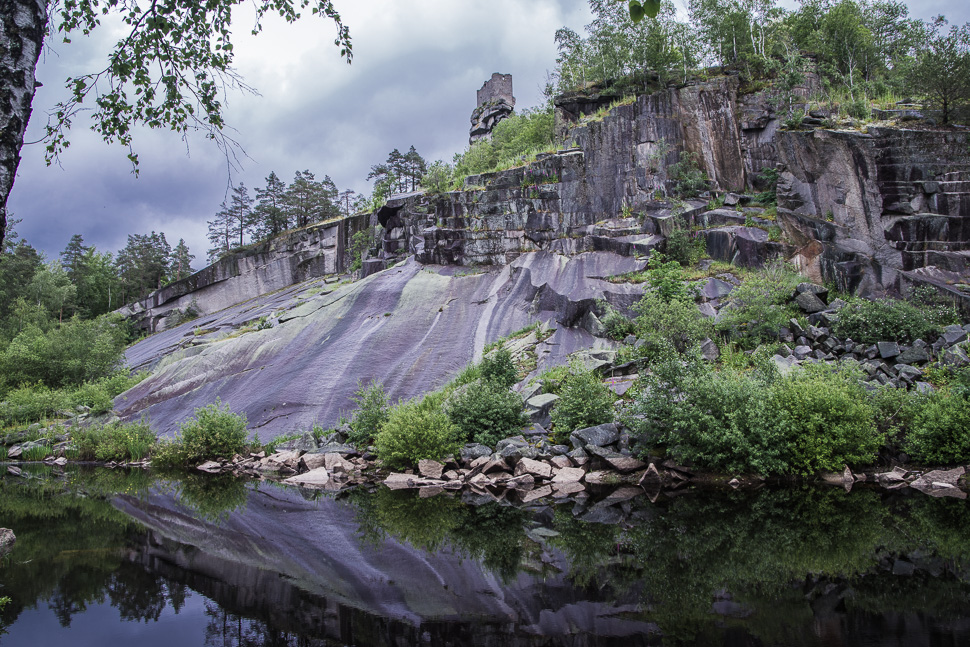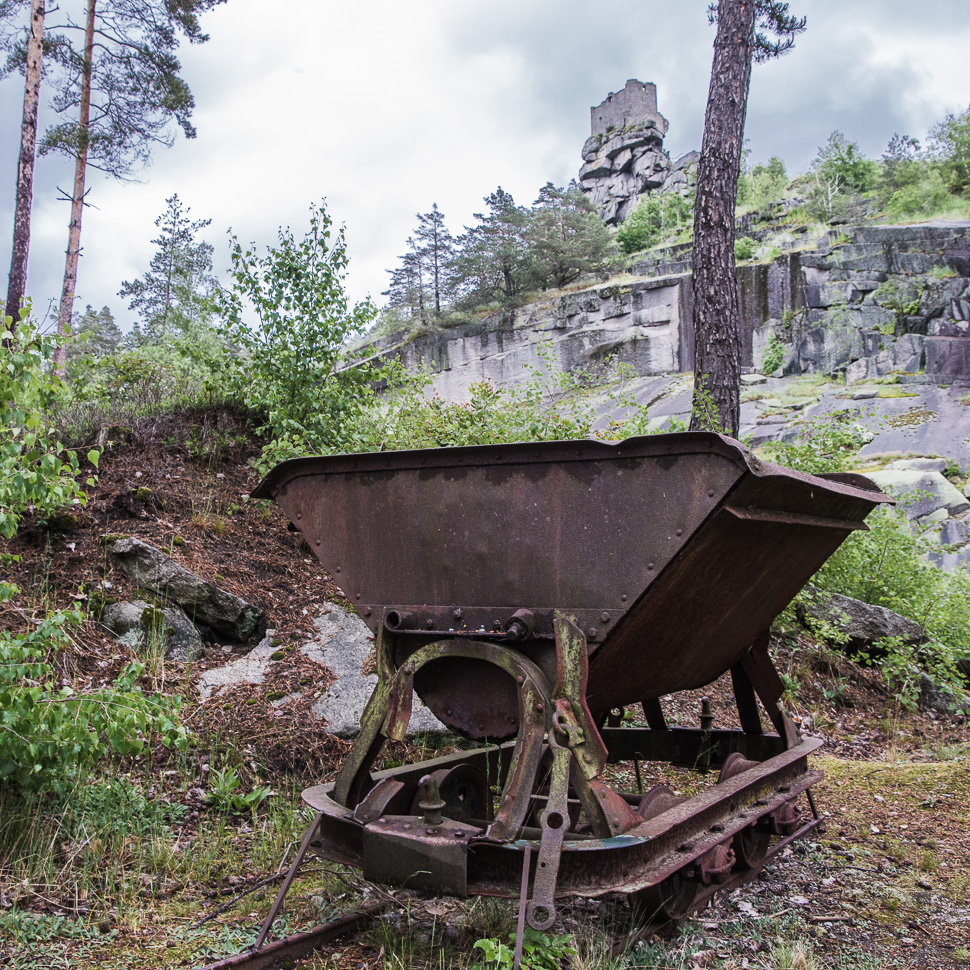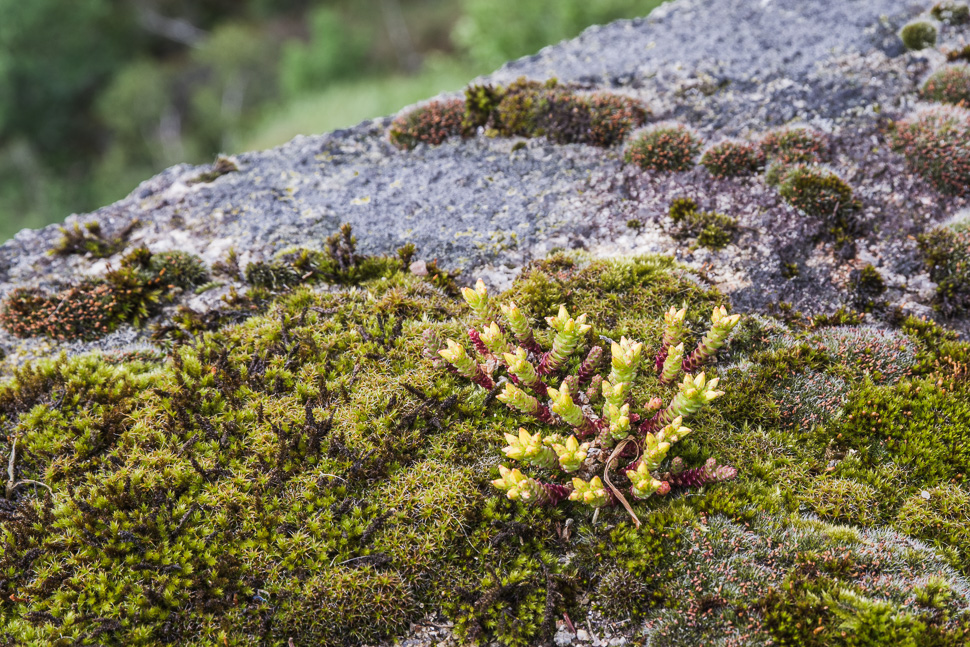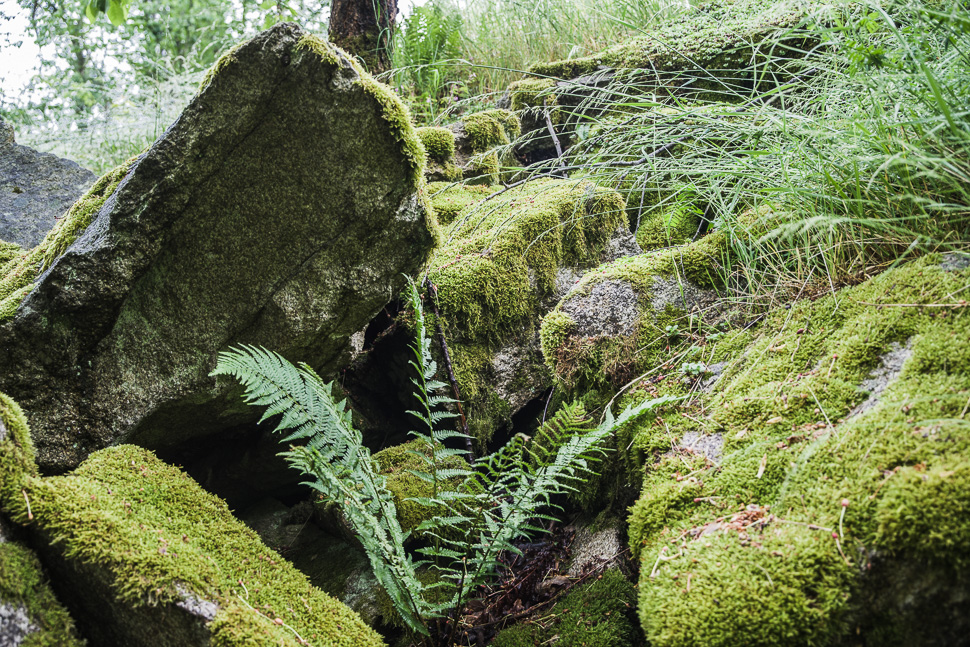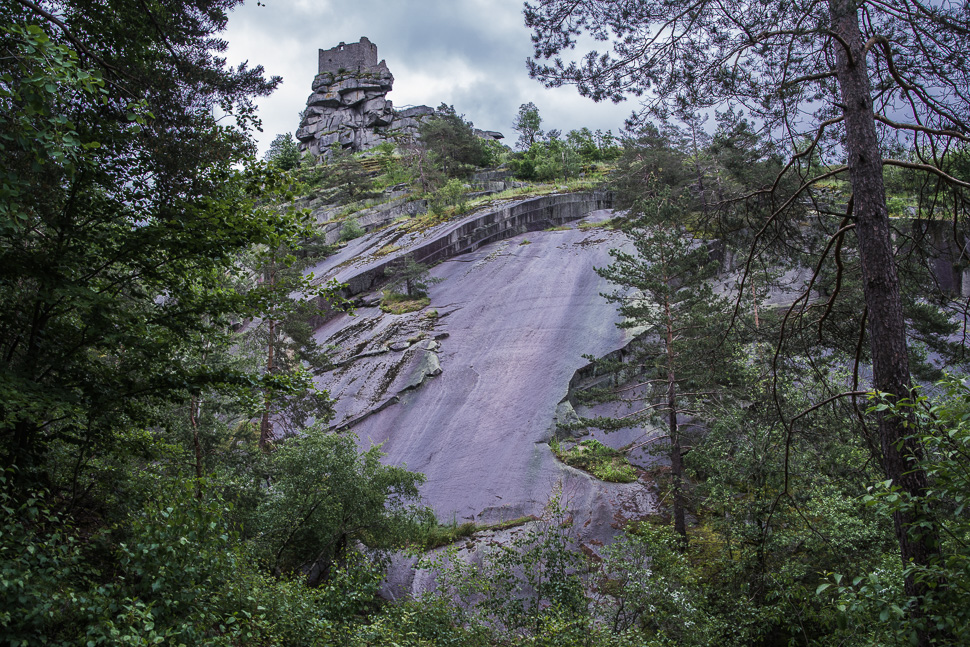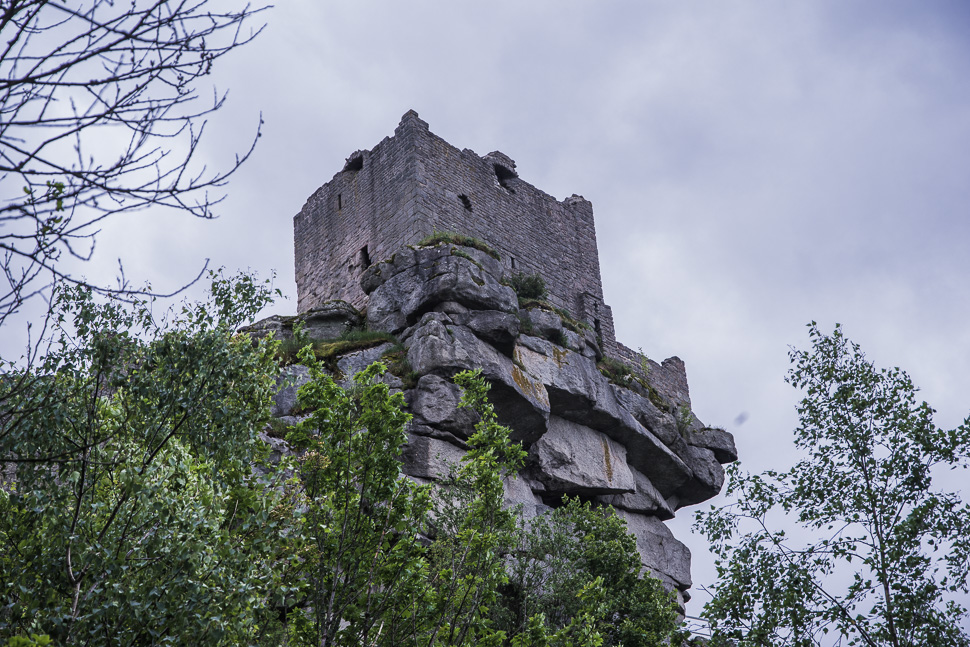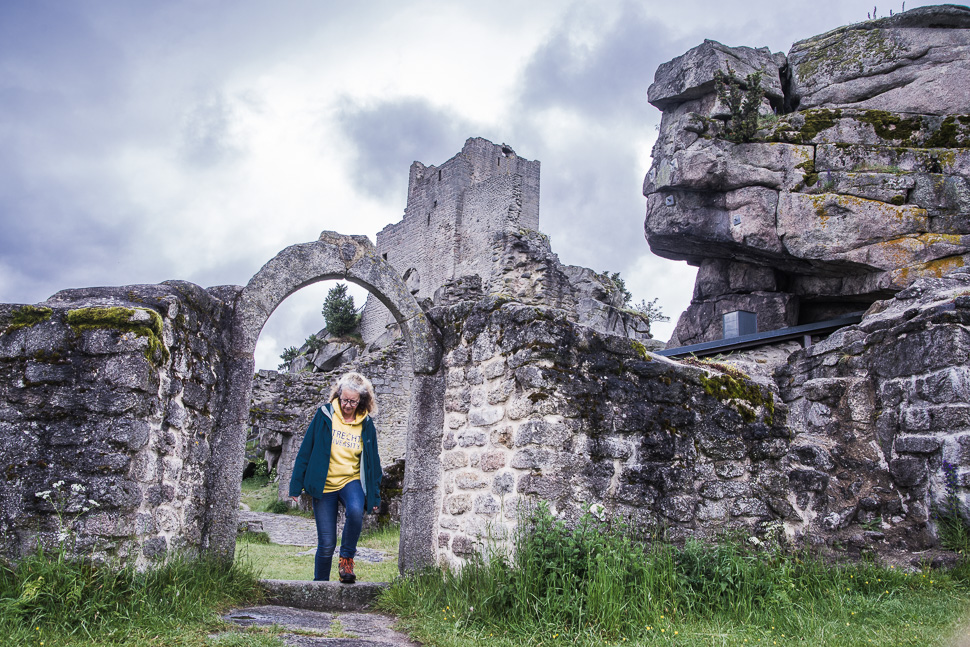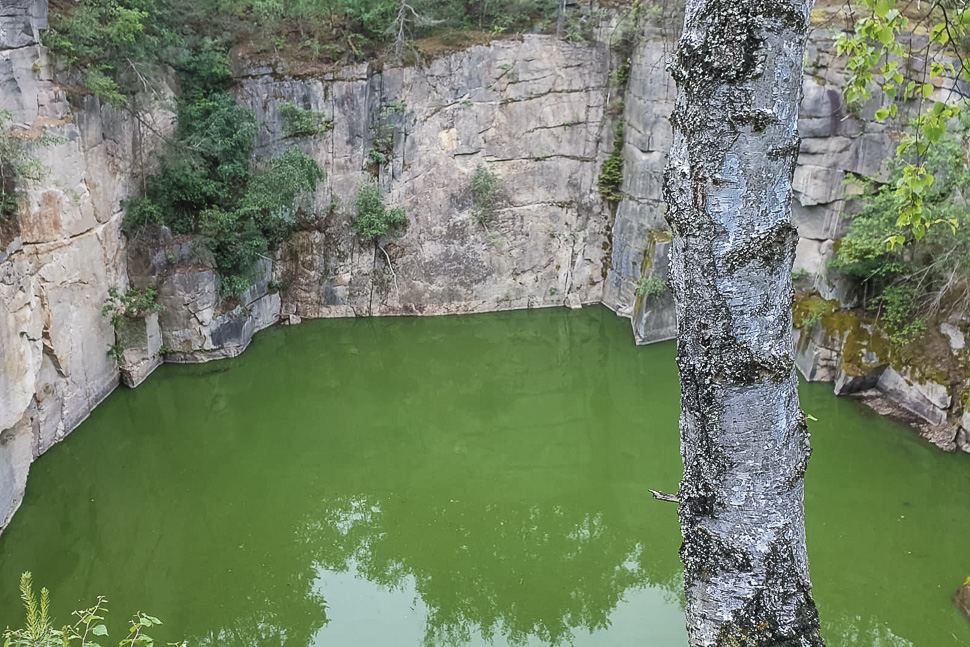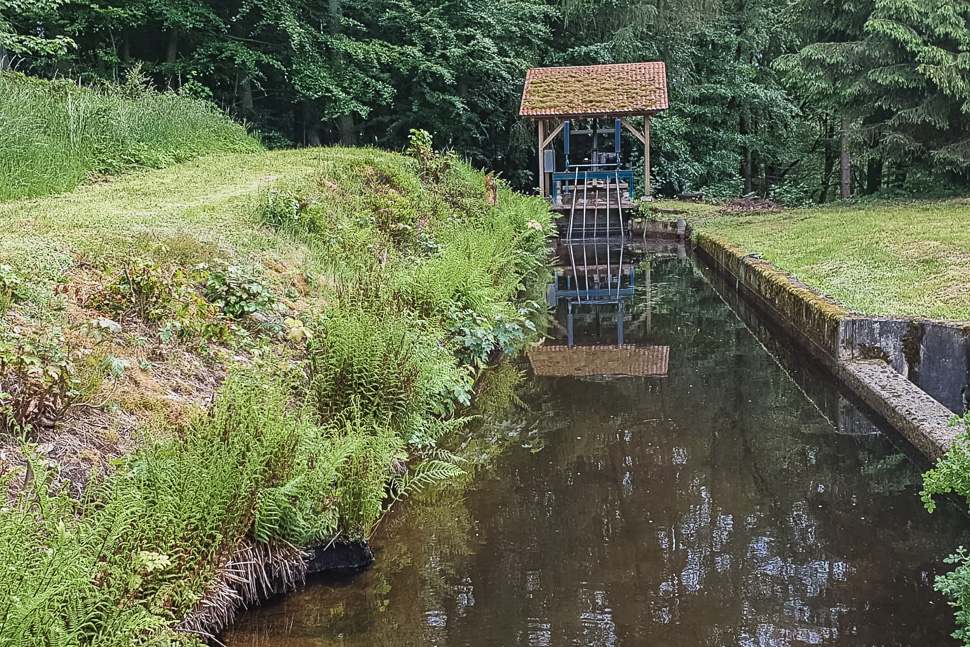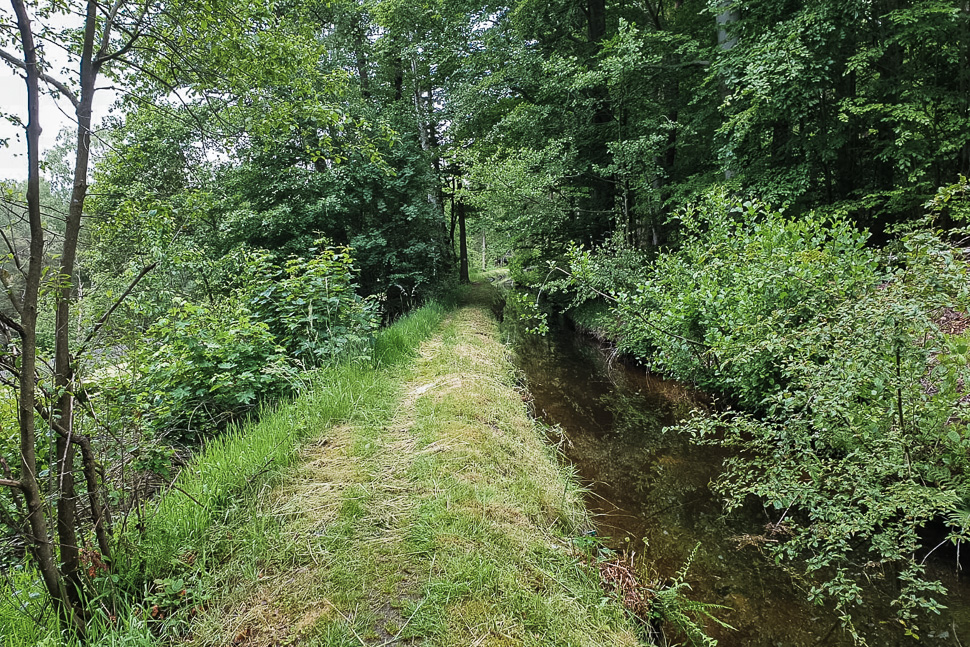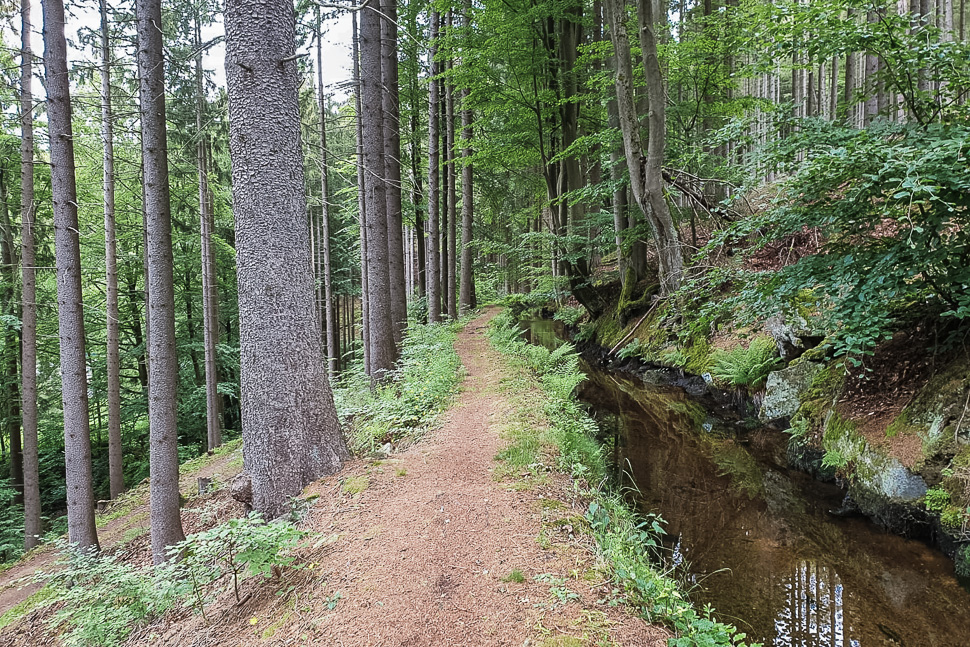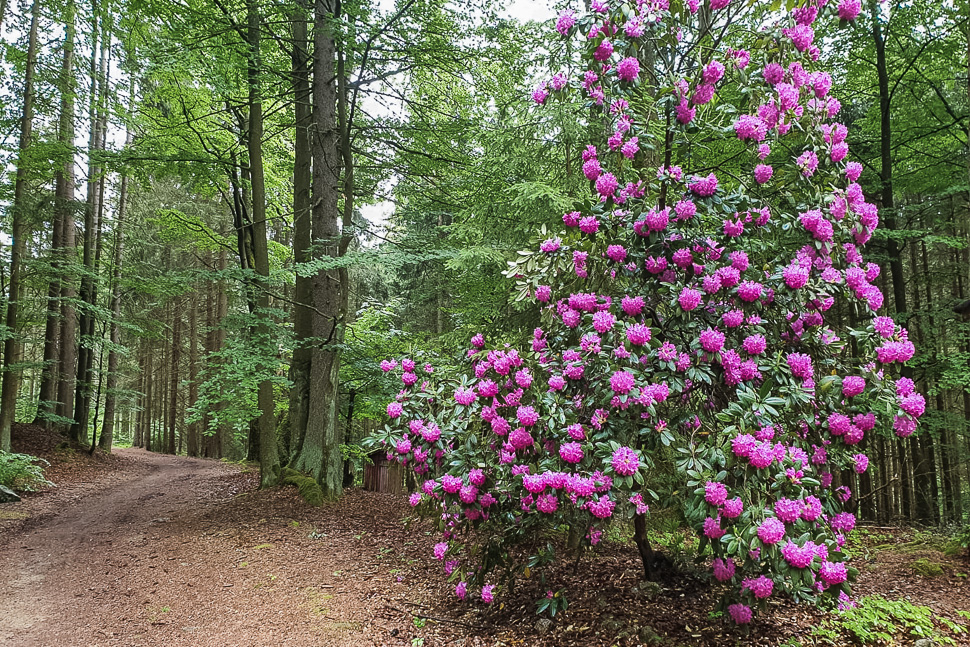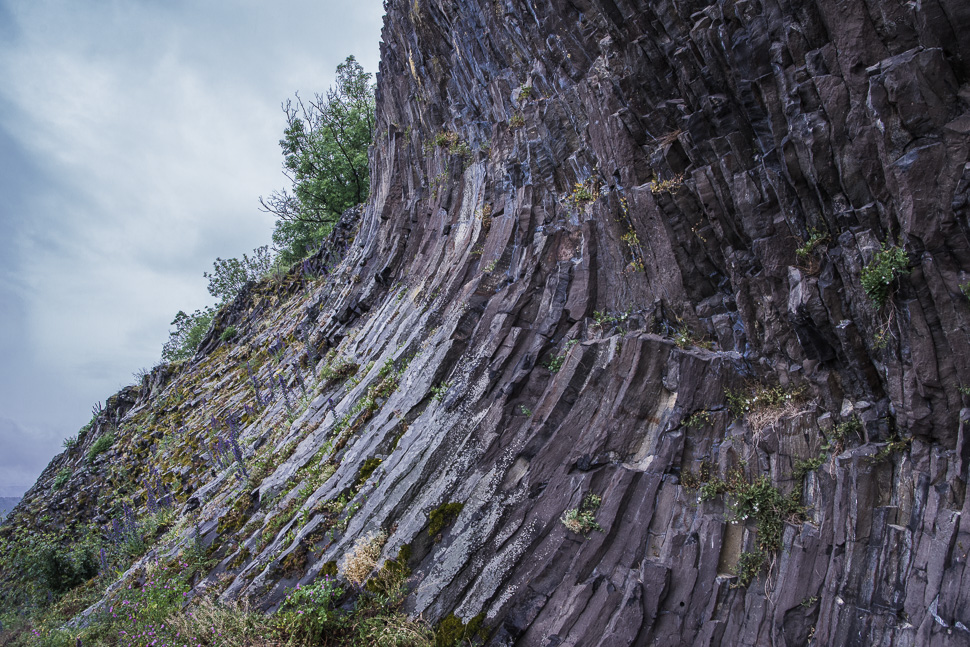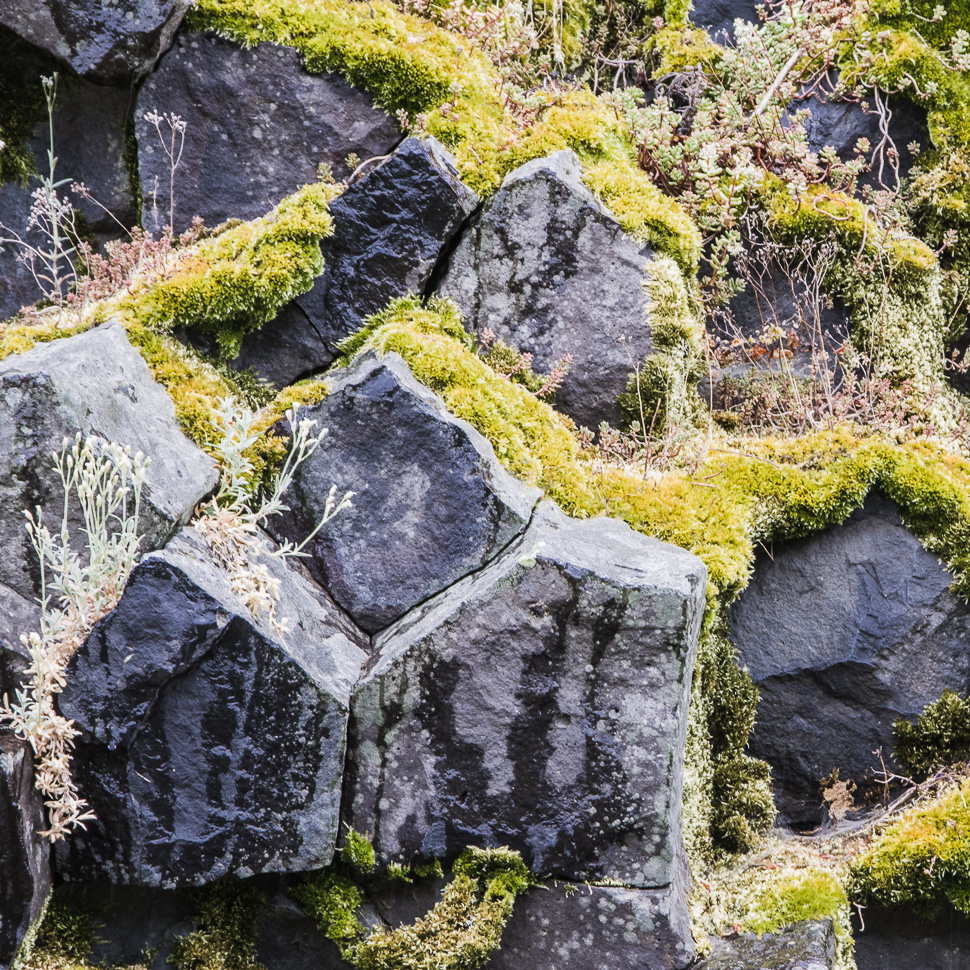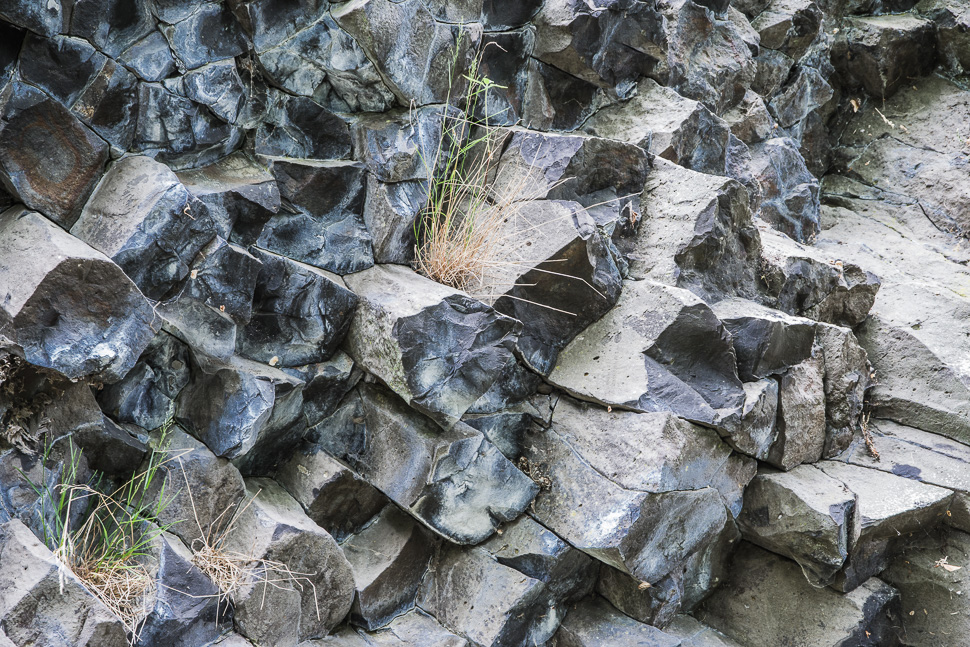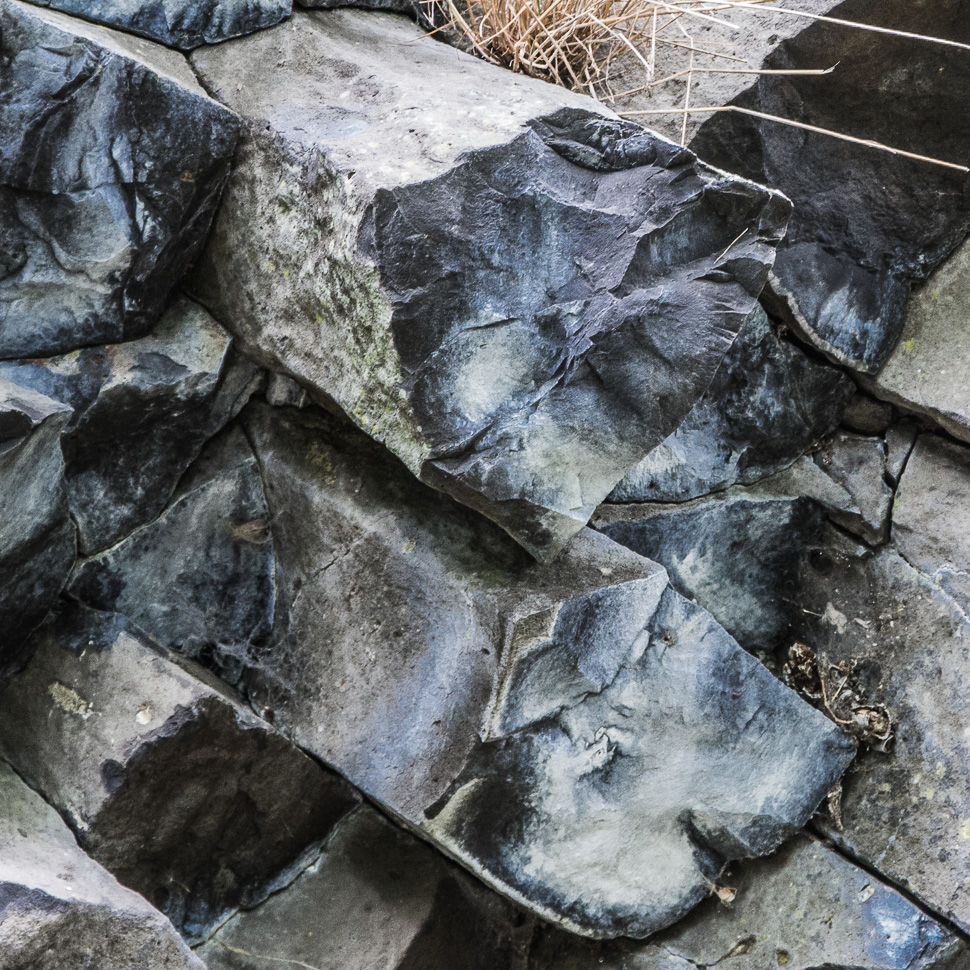The castle of Flossenbürg lies on a granite rock which was quarried for centuries as this formidable stone was used in many constructions all over Germany. We went to explore the castle and its surroundings. Afterwards we discovered the remains of a volcano!
Flossenbürg Castle is a former medieval castle founded in 1100 that rises high above Flossenbürg in the north-west of Bavaria on a bare granite rock. We first went around the hill on the Granite Path, which gave us a good impression of the granite which lies in layers like an onion below the castle.
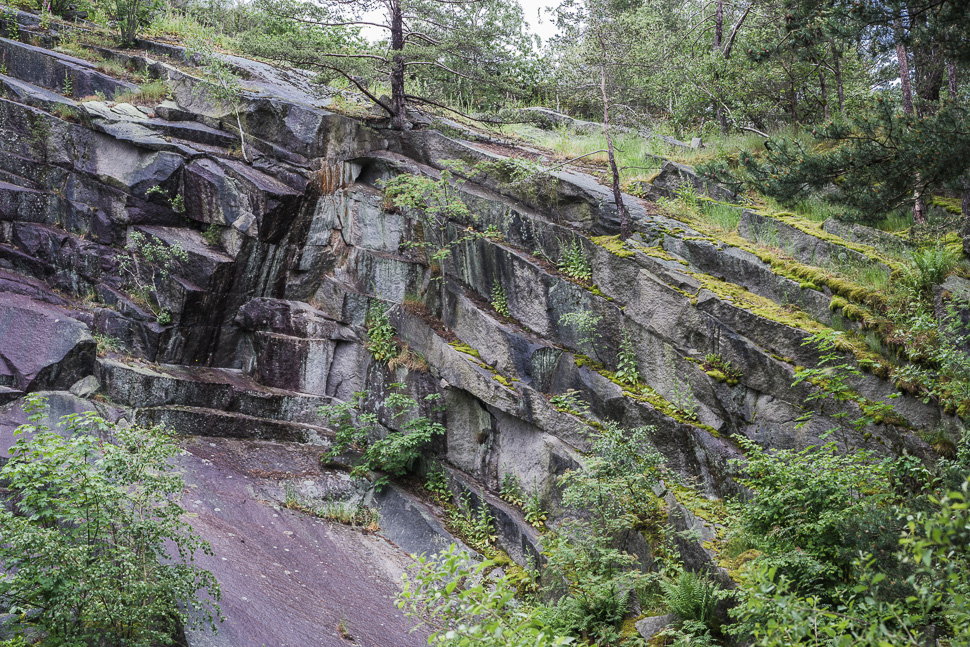 |
| Granite layers |
In the surrounding of the castle we saw a couple of quarries, which are not exploited anymore. We went for a hike which led us to a canal traversing a beautiful forest and finally past the Gaisweiher lakes and back up to the castle.
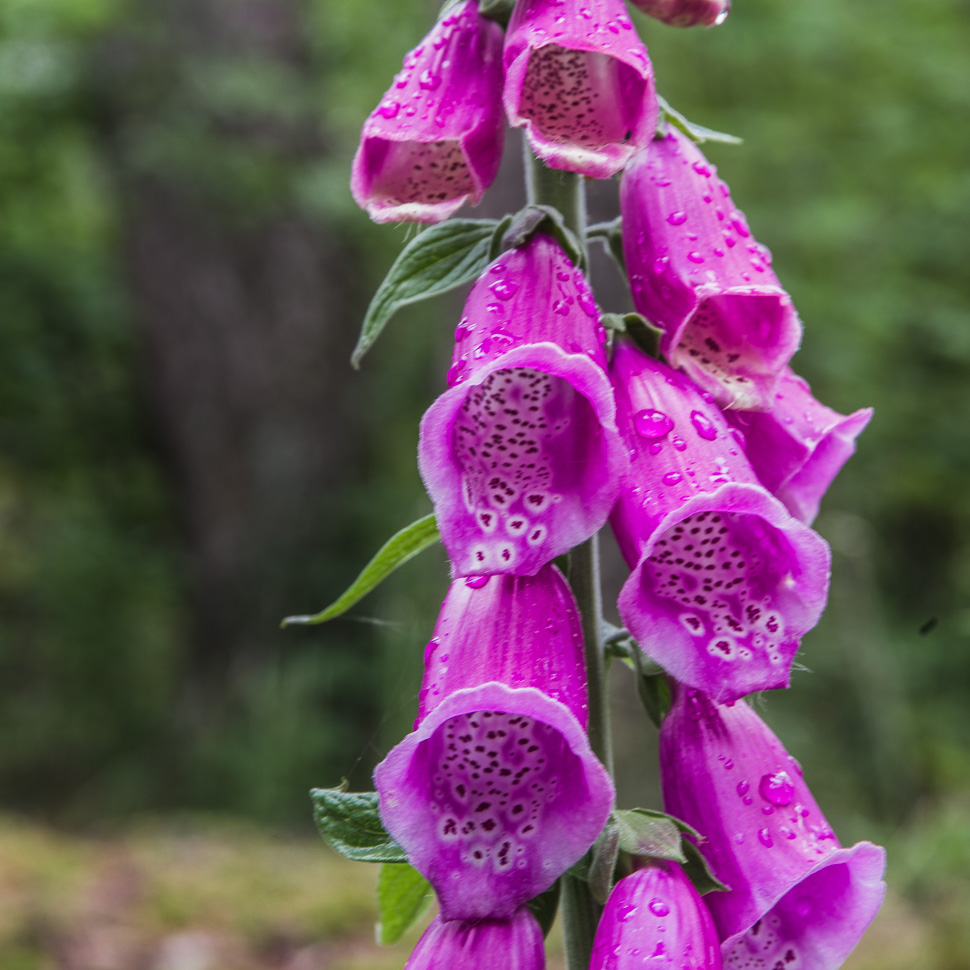 |
| Flower of the Day |
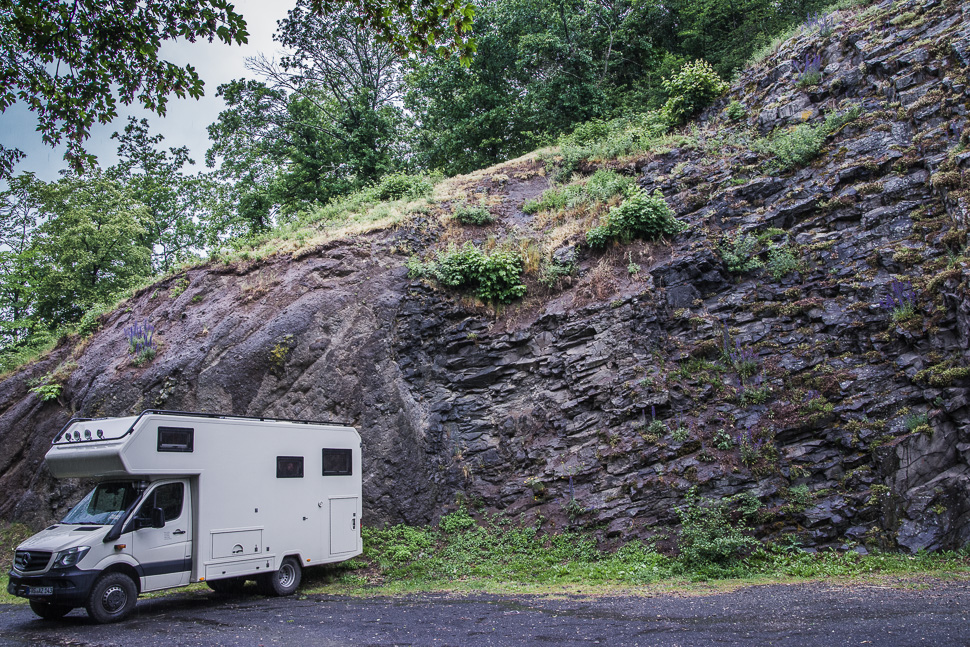 |
| Parking for the Night |
Thanks to park4night and the suggestion of this place by a fellow traveller we came to visit the basalt cone of Parkstein, created by a volcano 24 million years ago.
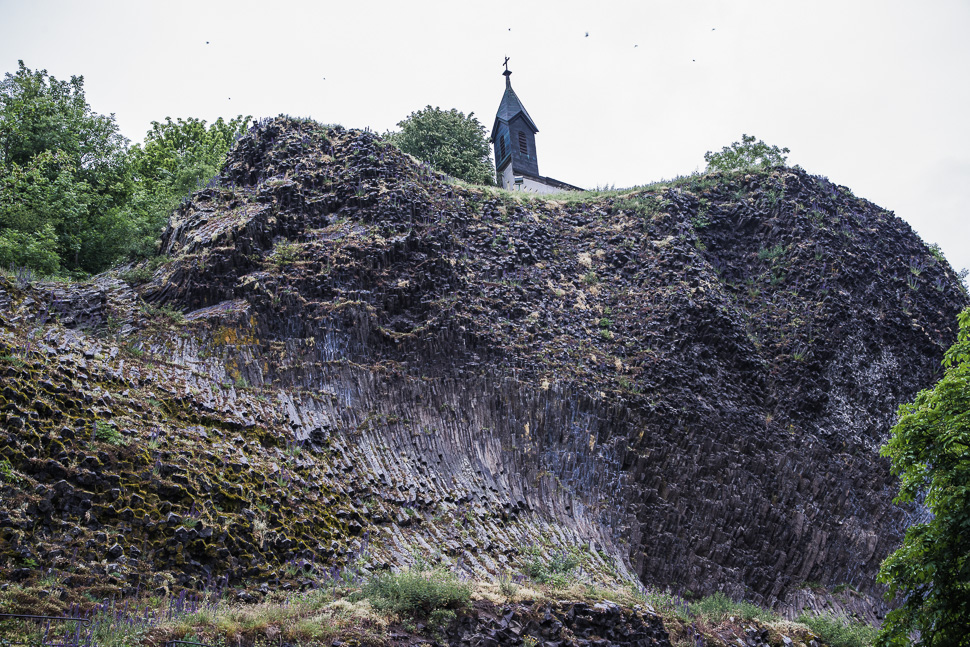 |
| Basalt outcrop at Parkstein |
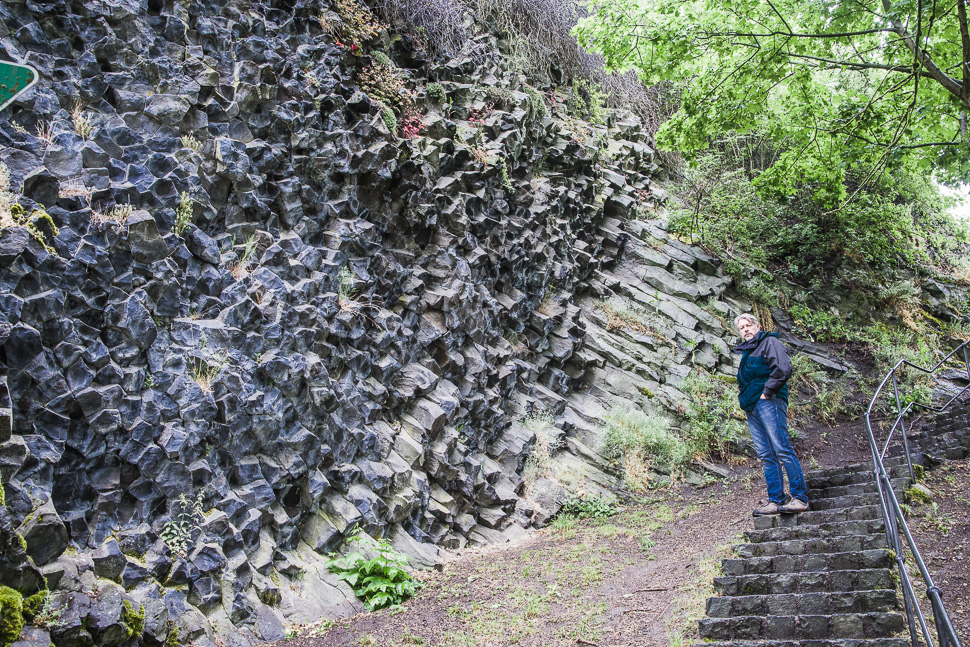 |
| Fascinating basalt columns |
Parkstein is famous for its impressive basalt outcrop. This basalt formation consists of pentagonal and hexagonal columns, whose shafts extend into the earth to a depth of up to 38 metres. It is part of an old stream of lava that has been exposed at the surface after the softer rock above it had been weathered away over the course of millions of years.
Alexander von Humboldt viewed the Parkstein as the “most beautiful basalt cone in Europe”. For us it was the first we ever saw and we were truly impressed! We visited the modern museum in the village which gave us a good impression how this cone was once formed.
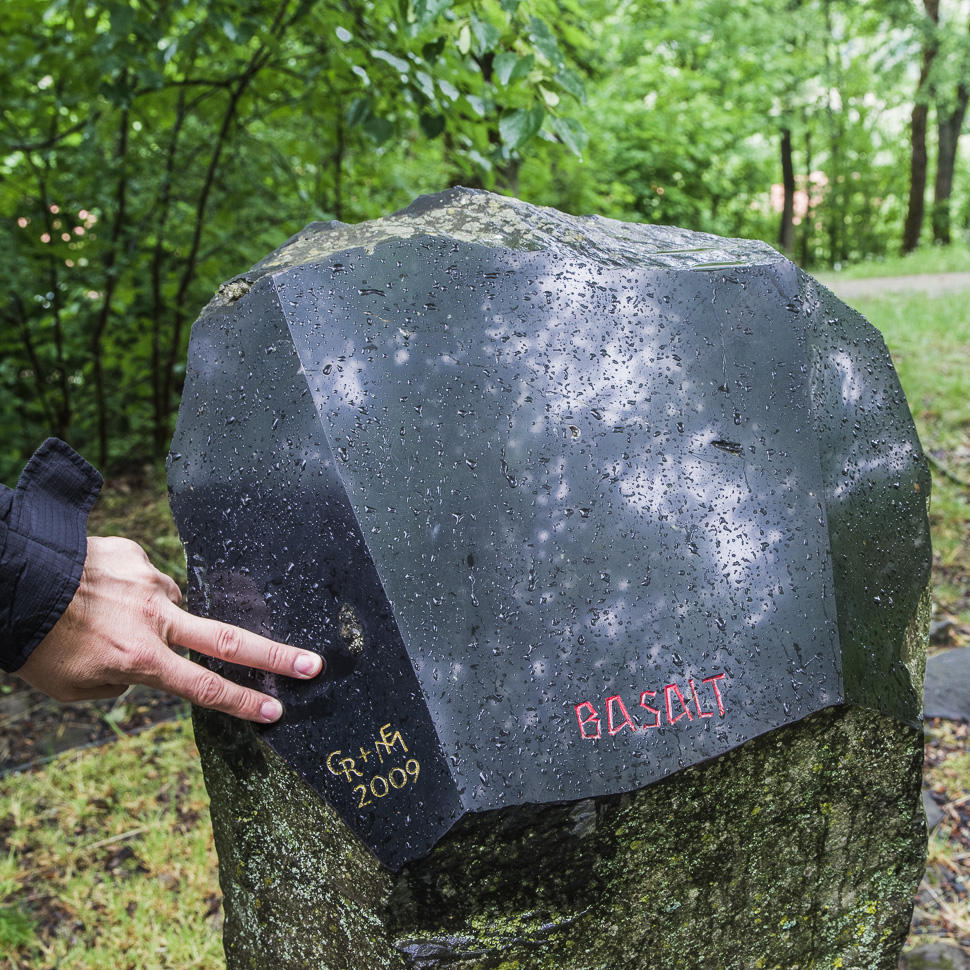 |
| Sanded basalt |
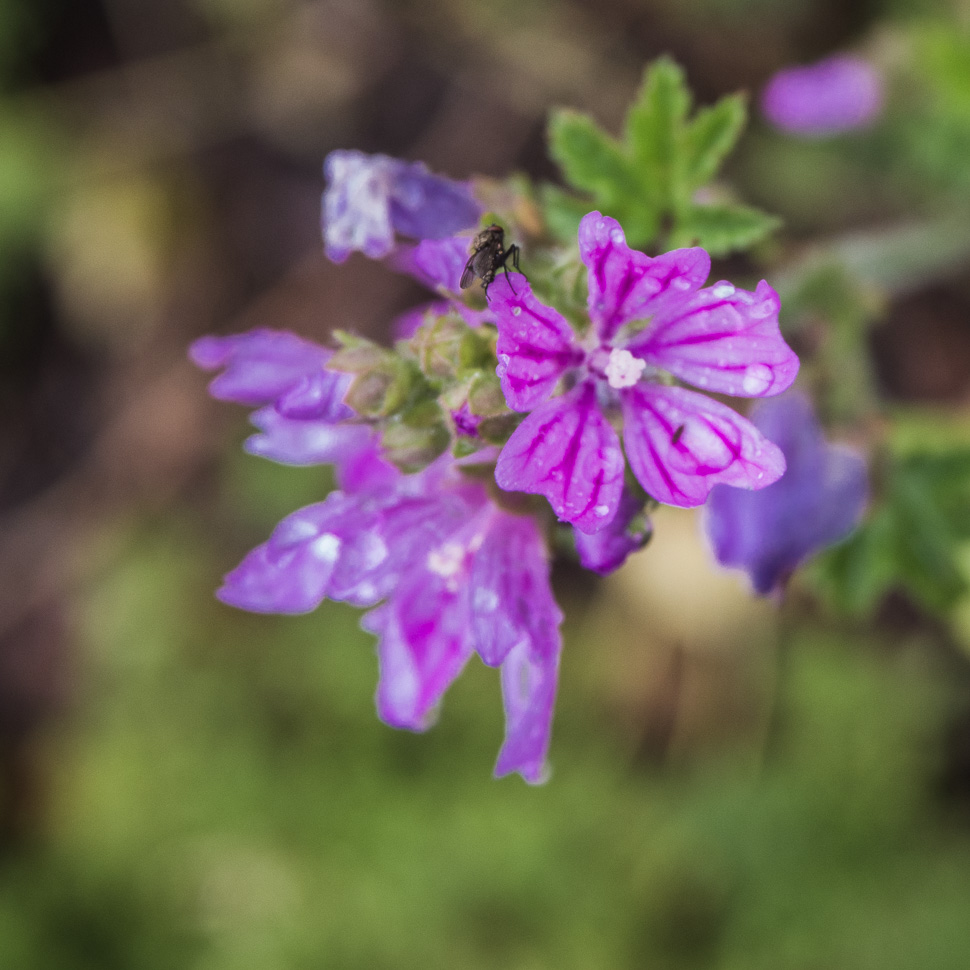 |
| Fly of the Day 😉 |
